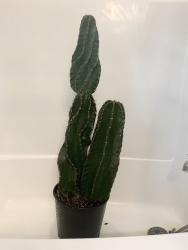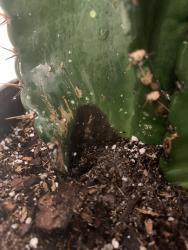We bought this 3' cereus peruvianus a month ago from our local nursery. I watered it for the first time this week and noticed large brown areas at the base of the taller stalk. Does it look like root rot? Is there any way to save it? Should I cut it and try to re-root it??
The top of the tall stalk is also much thinner than the top of the shorter one. That's what prompted me to water it in the first place since it seemed like it might be drying out.
I have a few small cacti but this beauty is much larger and I'm desperate to keep it healthy.
It's been next to a southern facing window (we live in North East USA). Sometimes gets cooler drafts from the window if that might be an issue.



